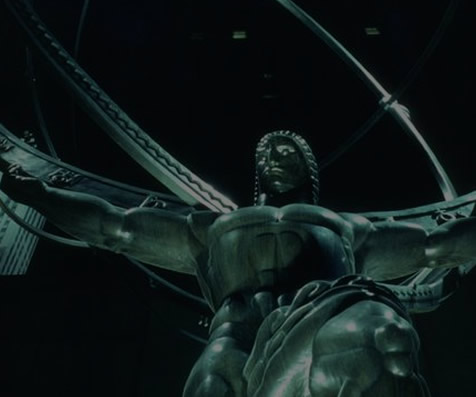Rethinking Motivation - Human Capitalist - October 2010
Rethinking Motivation - Human Capitalist - October 2010
Rethinking Motivation
By Joseph B. Hunt
Most business leaders have lost sight of what motivates people at work. In fact, some companies haven’t updated their management practices in years, which means they’re incapable of creating high-performance teams.
Companies continue to ignore the obvious: Offering incentives and rewards is less effective than tapping into truly meaningful intrinsic motivation. Leaders operate on old assumptions about motivation despite a wealth of well-documented scientific evidence.
The old “carrot-and-stick” mentality may actually inhibit employees from seeking creative solutions, partly because they focus on attaining rewards instead of solving problems.
So, how can you successfully tap into workers’ inherent motivation and creative drive? How can you boost the number of actively engaged employees from the paltry 33 percent reported by the Gallup Organization? And how can you sustain employees’ enthusiasm after their first 30 days on the job?
Seven Deadly Flaws
In Drive: The Surprising Truth About What Motivates Us, former U.S. Department of Labor aide Daniel H. Pink says businesses are out of sync with what scientists have been telling us over the last 50 years.
The hackneyed carrot-and-stick approach, now dubbed “Motivation 2.0,” encourages poor leadership practices, including Pink’s “seven deadly flaws”:
1. Extinguishing motivation
2. Diminishing performance
3. Crushing creativity
4. Crowding out good behavior
5. Encouraging cheating, shortcuts and unethical behavior
6. Becoming addictive or obsessive
7. Fostering short-term thinking
In fact, Pink holds Motivation 2.0 partly responsible for the economic chaos of 2008 that still lingers today. Mortgage brokers, for instance, were so hungry for commissions that they made questionable loans, which helped bring the nation’s banking system to its knees.
The Hawthorne Studies
In the 1920s, Harvard Business School initiated the first studies of human behavior at work, with support from the Rockefeller Foundation. Clinical psychologist Elton Mayo and Harvard Medical School physiologist L.J. Henderson were recruited to study the impact of various working conditions, such as how lighting affects fatigue levels.
Early research was conducted at AT&T’s Western Electric Hawthorne Plant. The results were published by F.J. Roethlisberger and W. Dickson in Management and the Worker.
The researchers found that workers’ and managers’ social needs had a powerful impact on their behavior at work. Workers enthusiastically embraced opportunities to contribute their thoughts, ideas and experiences regarding workplace issues.
Unfortunately, these findings failed to change work conditions for employees.
Scientific Management
At the beginning of the 20th century, American engineer Frederick Winslow Taylor asserted that businesses were being run in inefficient, haphazard ways. He invented the concept of “scientific management,” which assumed workers were little more than machines. To make the machine run smoothly, you rewarded the behaviors you wanted and punished those you discouraged.
“Work,” Taylor stated, “consists of mainly simple, not particularly interesting, tasks. The only way to get people to do them is to incentivize them properly and monitor them carefully.”
Thus began the firmly entrenched practice of motivating people with the proverbial carrots and sticks.
In the 1900s, Taylor had a point. We were, after all, building railroads, highways and major factories. But today, in much of the developed world, this is no longer entirely true. For many people, jobs have become more complex, challenging and self-directed.
Freud, Skinner & Maslow
The 20th century saw the birth of psychology and study of the human psyche. Sigmund Freud proposed that all humans were driven to seek pleasure and avoid pain. In the 1930s, behavioral psychologist B.F. Skinner created a large body of experimental research to show the effects of positive reinforcement on augmenting certain behaviors and extinguishing others.
In the 1950s, psychologist Abraham Maslow questioned the idea that human behavior was purely rat- or pigeon-like. He launched the field of humanistic psychology, proposing that once survival needs were met, people sought to achieve self-mastery and actualization.
In the 1960s, MIT management professor Douglas McGregor imported Maslow’s ideas to the business world. He proposed that humans had higher drives that weren’t contingent on rewards and punishments. If managers could tap into these inner motivations and grant employees greater autonomy and respect, workers would unleash greater performance.
While McGregor’s writing influenced some organizations, there were only modest improvements —mostly more flexible dress codes, working conditions and empowerment programs.
Despite these psychological insights, businesses entered the 21st century using outdated and ineffective motivational strategies.
The Third Drive
In 1949, psychologist Harry Harlow placed puzzles in monkeys’ cages and was surprised to find that the primates successfully solved them.
Harlow saw no logical reason for them to do so. Their survival didn’t depend on it, and they didn’t receive any rewards or avoid any punishments. Apparently, the monkeys solved the puzzles simply because they had a desire to do so.
As to their motivation, Harlow offered a novel theory: “The performance of the task provided intrinsic reward.” The monkeys performed because they found it gratifying to solve puzzles. They enjoyed it, and the joy of the task was its own reward.
Further experiments found that offering external rewards to solve these puzzles didn’t improve performance. In fact, rewards disrupted task completion.
This led Harlow to identify a third drive in human motivation:
1. The first drive for behaviors is survival. We drink, eat and copulate to ensure our survival.
2. The second drive is to seek rewards and avoid punishment.
3. The third drive is intrinsic: to achieve internal satisfaction.
But Harlow’s theory was met with disdain from the behavioral scientists who dominated motivational theory at the time. It took almost two decades for scientists to return their attention to intrinsic drives.
Negative Impact of Rewards
In 1969, psychologist Edward Deci ran a series of experiments that showed students lost intrinsic interest in an activity when money was offered as an external reward. The results surprised many behavioral scientists.
Although rewards can deliver a short-term boost, the effect wears off. Even worse, rewards can reduce a person’s longer-term motivation to continue a project.
Deci proposed that human beings have an inherent tendency to seek out novelty and challenges, to extend and exercise their capacities, to explore, and to learn.
Open Source Innovations
The third drive has become more important as our society moves from a manufacturing-based economy to one of knowledge and services.
Carrots and sticks continue to provide effective incentive and motivation for work tasks that are routine and repetitive. But for jobs that require complex creativity, intrinsic motivation works best.
As proof, examine the case of two companies that set out to publish online encyclopedias:
1. Microsoft hired the best people and devoted considerable funds to achieve Encarta.
2. A global force of volunteers created Wikipedia with no budget or salaries.
Encarta no longer exists, while Wikipedia thrives as a fully functional volunteer project.
Most businesses haven’t caught up to this new understanding of what motivates us. Too many organizations, governments and nonprofits still operate from assumptions about human potential and individual performance — ideas that are clearly outdated and ineffective. They continue to pursue short-term incentive plans and pay-for-performance schemes in the face of evidence against them.
Unleashing Motivation
How do you move yourself — and your company — away from using carrot-and-stick incentives?
Pink describes three critical conditions for an intrinsic motivational environment:
1. Autonomy: Give people autonomy over what they’re doing and how they do it, including choosing their time, tasks, team and techniques.
2. Mastery: Give them an opportunity to master their work and make progress through deliberate practice.
3. Purpose: Make sure people have a sense of purpose in their work — preferably to something higher and beyond their job, salary and company.
Autonomy may seem daunting when it comes to practical implementations. Some companies, however, have already forged new and innovative work environments that are generating huge results — most notably, Best Buy’s ROWE (“results-oriented work environment”) program. With ROWE, employees have no schedules and are measured only by what they get done.
Google is famous for its “20-percent time” program, which allows engineers to spend 20 percent of their time on projects that interest them. Google Mail is one successful project that came out of the program.
The Australian tech company Atlassian implemented a similar program, with engineers given a full day each quarter to work on any software problem they choose — a ritual the company calls “FedEx” days. (Completed projects are delivered overnight.)
Creating Flow
People are most productive and satisfied when their work puts them in a state of “flow” — more commonly recognized as being “in the zone.” In the flow state, one experiences a heightened sense of focus and a generally higher sense of satisfaction.
What we know about flow is primarily based on the work of psychologist Mihaly Csikszentmihalyi, whose seminal book, Flow: The Psychology of Optimal Experience, describes it as the moment in which “a person’s body or mind is stretched to the limits in a voluntary effort to accomplish something difficult and worthwhile.”
You can’t give people the opportunity to create “flow” experiences without providing autonomy, time to practice and improve mastery, and a sense of higher purpose.
Rethinking Management
Intrinsic motivation theories aren’t palatable to everyone. Unfortunately, our notions of what constitutes proper motivation in the office are often too entrenched to be flexible. Some companies have given lip service to worker “empowerment,” without actually letting go of control.
At its core, management hasn’t changed all that much since Taylor and his scientific management theory proposed that we need to control the passive nature of workers with extrinsic motivators.
This doesn’t work for motivating non-routine, right-brain activities required of knowledge workers today. Management, in this sense, is deeply out of sync with human nature — in essence, management is the problem, not the solution.
Rethinking Human Nature
Our basic nature is to be curious and self-directed, to seek out and explore solutions to problems. If your employees are inert, disengaged and bored, something has flipped their default setting.
Many leaders will resist giving up their carrots, and many workers will find it hard to imagine a world without incentives. We’re conditioned to like the carrots and avoid the sticks.
But leaders who recognize the value of, and who can implement, intrinsic motivation can expect a whole new workplace — and an entirely new definition of work. We don’t need better management as much as a renaissance of self-direction.
The bigger, unanswered question is whether today’s leaders are ready to rise to the new challenges autonomy will require.
Lose the stick, keep the carrot tied to measurable performance, and get with today’s reality. Intrinsic motivations are what drive sustainable performance.
Boutique executive search services with best in class global network, contacts and market mastery.
Deeply connected and engaged personal service approach, long-term investment in client community and 25 year history of strong relations with both Multi-National leaders and Private Equity partners.






